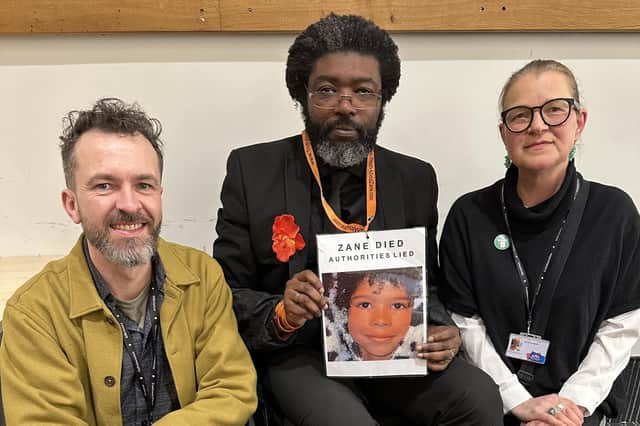Campaign known as Zane’s law wins the backing of councillors in Brighton and Hove


Zane’s law was named after seven-year-old Zane Gbangbola who died 10 years ago after his home was flooded by water from the River Thames which had passed through a contaminated landfill site.
His father, Kye Gbangbola, was at Hove Town Hall to see members of Brighton and Hove City Council give their backing to proposals aimed at preventing anyone else from dying in the same way.
Advertisement
Hide AdAdvertisement
Hide AdAll three parties – Labour, Green and Conservative – voted in favour of the council compiling a register of land that may be contaminated – and for that register to be easily available to residents.
Zane’s law would also mean enforcing a clean up of any land that posed a harm to public safety or pollutes controlled waters.
And the council would also be expected to assess flood risk in relation to potentially contaminated sites.
Members of the council voted in favour of Zane’s law after debating a motion proposed by Green councillor Kerry Pickett.
Advertisement
Hide AdAdvertisement
Hide AdShe said that the Fire Brigades Union, Public and Commercial Services Union and Zane’s doctors were certain that the family were poisoned by hydrogen cyanide.
They believe that it came from a contaminated landfill site which formed a lake behind their home in Chertsey, Surrey, and which was flooded with water from the Thames.
Councillor Pickett said: “Currently, regulations on toxic waste disposal are dangerously inadequate.
“While a national historic landfill dataset that defines the location of and provides specific attributes for known historic landfill sites exists, the Environment Agency does not regulate it and this data is thought to be incomplete.
Advertisement
Hide AdAdvertisement
Hide Ad“The (datasets) are cumbersome to use, often requiring some sort of specialist knowledge to access and find out where the sites are located, who was licensed to operate them and what waste type may be found in the area.”
Labour councillor Tim Rowkins said that Brighton and Hove did not face the same flood risks as Chertsey but the “dangerous legacy” of former landfill sites “cannot be ignored”.
Councillor Rowkins, who chairs the council’s City Environment, South Downs and the Sea Committee, said: “We place focus on mitigating any particular risks that exist here in Brighton and Hove and working in a co-ordinated fashion with colleagues around the countries, via the relevant bodies, to meaningfully compel the incoming government to act.
“Hopefully the actions in Lewes and here and Adur will form a block of undeniable opinion down here.”
Advertisement
Hide AdAdvertisement
Hide AdConservative councillor Ivan Lyons said that Zane’s inquest had concluded that he died as a result of carbon monoxide poisoning from a petrol pump.
Despite this, the Tories backed the call and Councillor Lyons said: “The proposals under Zane’s law require both local authorities and the Environment Agency to keep registers of contaminated land.
“This would allow local people to know if they are living near to contaminated land and take precautions to prevent such tragedies in the future.”